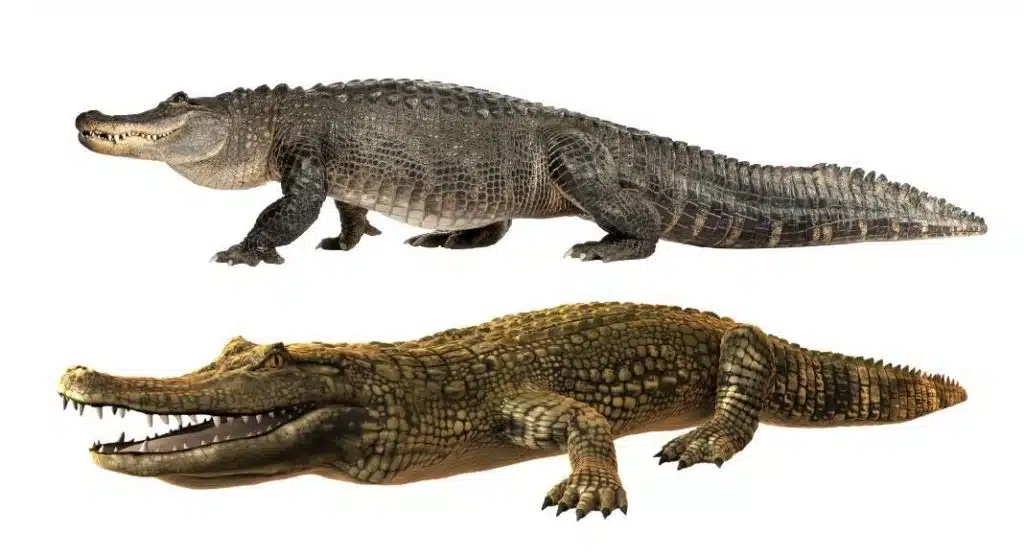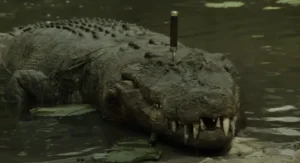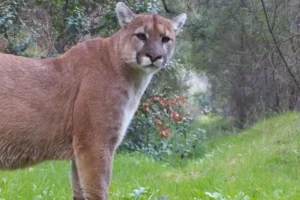Everything You Should Know About A Story of American Alligators
By Ainul Haque
April 9, 2022
Update on : May 15, 2023

The American alligators are relatively large species of crocodilian found only in the United States. America has gained success in protecting the endangered from their absolute extinction.
The federal government of America facilitated protection, preservation, and reduced demand for alligator products for improving the species’ wild population.
Description of American Alligators
The common name of the wild animal is American Alligators and Alligator Mississippiensis is its scientific name. It is reptiles in type and carnivore is its diet. Its group name is the congregation.
The average life span of such type of alligator is 35 years to 50 years. It grows up 10 feet to 15 feet and the weight of each alligator is around 1,000 pounds or 450 kilograms. The male alligator is relatively larger than the female one on average. The animal is covered with dark skin and with small bony scales which are called scutes.
A very strong and long tail helps propel the animal into the water. The alligators are cold-blooded. They depend on the natural weather around them for providing warmth. To do this, they dig holes in mud or bask in the sun to escape the heat.
Moreover, the American alligators can be hard to miss when they bask on the shore, they can look harshly like logs when they are floating in the water.
The crocodile is a cousin of the American alligator. The perfect way to identify the difference between a crocodile and an alligator is the shape of the mouths of the two wild animals.
A crocodile has a long and thin snout while an alligator has a wide and round snout. A crocodile has two large teeth that stick out while the mouth of an alligator remains closed.
The American alligator was first classified in 1801 by French zoologist François Marie Daudin as Crocodilus mississipiensis.
Later in 1807, Georges Cuvier created the genus Alligator of which the American alligator and the Chinese one are the only extant species in the genus. Read also about Robot Dog.
Prehistoric characteristics of the alligator
When a man looks at the wild animal, he or she can easily see their armored lizard-like bodies, powerful jaws, and muscular tails and it is
One look at these menacing predators—with their armored, lizard-like bodies, muscular tails, and powerful jaws—and it is palpable that they are the envoys from the distant past.
Scientists say the species is more than 150 million years old. It is somehow managing to avoid its extinction from around 65 million years ago at that time when its prehistoric contemporaries dinosaurs died off.
Life of alligators in the water
The American alligators live in freshwater rivers, swamps, lakes, and marshes of the southeastern United States of Louisiana and Florida.
These reptiles are heavy and supremely well-adapted swimmers in ungainly out of water. A male alligator is average 10 to 15 feet in length and weighs around 1,000 pounds while a female alligator grows to a maximum of around 9.8 feet.
Reproduction
Hatchlings are six to eight inches long with yellow and black stripes. But the juveniles, which are on the menu for dozens of predators, including raccoons, birds, bobcats, and even other alligators, typically stay with their mothers for around two years.
Range
The American alligator can be found in wetlands in the coastal area of the United States. And they are available in the southeast of North Carolina and west of eastern Texas. Their range is also extended down to southern Florida and included the Everglades. The alligators are commonly found in slow-moving freshwater rivers and habituated in swamps, lakes, and marshes.
Diet
An adult alligator is highly habituated to its biodiversity. It feeds mainly on fish, snakes, turtles, and small mammals. However, is an opportunist, and a hungry gator and eats just about anything, including pets, carrion, and in rare instances of human.
Behavior
An alligator has a variety of means of locomotion and movement. It can walk, swim, run, and even crawl on land. Unlike the alligators can walk with their legs directly as opposed to diagonal. While they move it allows them to lift their tails off of the ground.
The alligators, as cold-blooded reptiles, remain and undergo dormancy when the weather becomes cold.
They know to dig tunnels 65 feet or 20 meters by themselves long to protect themselves from extreme coal and heat.
Life History of the American alligators
American alligators generally start their reproduction when they step into 10 to 12 years. An adult alligator, after mating, breeds in shallow water. The female alligator starts building her nest out of nearby vegetation.

A female alligator can lay up to 90 eggs in her nest and covers the eggs with more vegetation.
To let their mother know, they remain ready to hatch, the little alligator makes a high-pitched noise from inside the egg. An egg hatches incubating for nearly 65 days. Many juvenile alligators are eaten by predators such as snakes, birds, fish, and mammals. These alligators can survive for 50 years.
Conservation
Now this species is specified as the least concern. At present, the main threat to the alligators is habitat loss caused by development and wetland drainage.
The alligator of the United States is a vital keystone species of the Southeast. Alligator uses tails to dig burrows in mud to keep warm and for nesting.
When the alligators abandon burrows, the holes left behind fill with fresh water and are utilized by other species for drinking and breeding. If the alligator is removed from its native ecosystem, it would affect the other species.
Color of the alligators
Dorsally an adult American alligator may be brown, olive, gray, and black in color.
But, they are on average mostly darkly colored like modern crocodilians and can be distinguished by color via their more blackish dorsal scales against the crocodiles. Their undersides are cream-colored.
Some American alligators have an inhibited gene or missing melanin, which makes them albino.
The American alligator is extremely rare and almost impossible to find in the wild.
They can survive in captivity as they are very vulnerable to the predators and sun.
The strength of the bite
An adult American alligator made a record for having the strongest laboratory-measured bite of any living animal that measured at up to 13,172 N or 1,343.2 kgf to 2,961 lbf.
At the time when the report was published, it represents in any other crocodilians, and the same laboratory has been able to measure a greater bite force of 16,414 N or 1,673.8 kgf to 3,690 lbf in saltwater crocodiles.
There is no noticeable difference between the bite forces of a female and male American alligator of similar size.
Sources of the article:
Animal Diversity Web, University of Michigan Museum of Zoology
National Park Service, National Geographic
Smithsonian’s National Zoo and Conservation Biology Institute
















